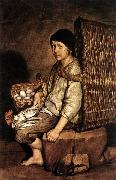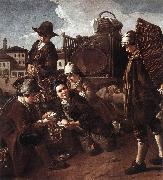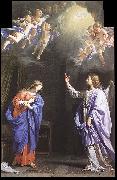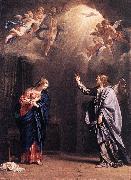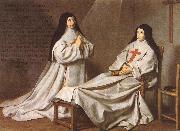CERUTI, GiacomoItalian Painter, 1698-1767 | |||
 |
|||
|
|
|
||||||||||
|
|
||||||||||
|
Boy with a Basket Chico con una cesta Pintura Identificación:: 5988 Vea nuestra galería en Suecia |
Chico con una cesta c. 1745 Oil on canvas, 130 x 95 cm Pinacoteca di Brera, Milan c. 1745 Óleo en lona, 130 x 95 cm Pinacoteca di Brera, Milán c._1745 Oil_on_canvas,_130_x_95_cm Pinacoteca_di_Brera,_Milan |
|||||||||
|
|
||||||||||
|
Evening at the Piazza jj Noche en la plaza jj Pintura Identificación:: 5989 Vea nuestra galería en Suecia |
Noche en la plaza jj c. 1730 Oil on canvas, 210 x 298 cm Museo Civico d'Arte Antica, Palazzo Madama, Turin c. 1730 Óleo en lona, 210 x 298 cm Museo Civico d-Arte Antica, Palazzo Madama, Turin c._1730 Oil_on_canvas,_210_x_298_cm Museo_Civico_d'Arte_Antica,_Palazzo_Madama,_Turin |
|||||||||
|
|
||||||||||
|
The Annunciation kljk la Anunciación kljk Pintura Identificación:: 5991 Vea nuestra galería en Suecia |
la Anunciación kljk Apart from Vouet, Champaigne was the most important painter active in Paris in the middle years of the 17th century. He was born and trained in Brussels. He arrived in Paris in 1621. Throughout his career he made many official commissions, for monasteries, for the Church, and for Louis XIII. He collaborated with Nicolas Poussin in decorating the Luxembourg Palace, then worked for the queen mother, Marie de Medicis, for Louis XIII, and after 1635 primarily for the king's chief minister, Cardinal Armand Richelieu, for whom he decorated the Palais Royal, the dome of the Sorbonne, and other buildings. His art has not been studied in depth until recently, and has undergone radical reassessment: instead of being seen as an exponent of dry Classicism, he is now seen to epitomize the whole epoch. As a portraitist, his vivid depictions of Cardinal Richelieu show how he was able to seize on the essential characteristics of the autocrat, while his portraits of other, now unidentifiable contemporaries are much more sympathetic. In the first part of his career, as a painter of religious pictures, he executed a number of large altarpieces that shows his Flemish origin. This is especially true of such Rubens-inspired works as the Adoration of the Shepherds in the Wallace Collection, London. Later in life, Champaigne changed his art dramatically when he came under the influence of the Jansenist movement. His paralysed daughter was miraculously cured in the Jansenist nunnery of Port-Royal, and to mark the event Champaigne painted his celebrated but untypical Ex-Voto (Louvre, Paris). Champaigne's art was much more varied than is usually thought, and his achievement spans almost fifty years, from the mid-1620s to his death in 1674. He was one of the fourteen founder-members of the Academy in 1648. Apart from Vouet, Champaigne was the most important painter active in Paris in the middle years of the 17th century. He was born and trained in Brussels. He arrived in Paris in 1621. Throughout his career he made many official commissions, for monasteries, for the Church, and for Louis XIII. He collaborated with Nicolas Poussin in decorating the Luxembourg Palace, then worked for the queen mother, Marie de Medicis, for Louis XIII, and after 1635 primarily for the king-s chief minister, Cardinal Armand Richelieu, for whom he decorated the Palais Royal, the dome of the Sorbonne, and other buildings. His art has not been studied in depth until recently, and has undergone radical reassessment- instead of being seen as an exponent of dry Classicism, he is now seen to epitomize the whole epoch. As a portraitist, his vivid depictions of Cardinal Richelieu show how he was able to seize on the essential characteristics of the autocrat, while his portraits of other, now unidentifiable contemporaries are much more sympathetic. In the first part of his career, as a painter of religious pictures, he executed a number of large altarpieces that shows his Flemish origin. This is especially true of such Rubens-inspired works as the Adoration of the Shepherds in the Wallace Collection, London. Later in life, Champaigne changed his art dramatically when he came under the influence of the Jansenist movement. His paralysed daughter was miraculously cured in the Jansenist nunnery of Port-Royal, and to mark the event Champaigne painted his celebrated but untypical Ex-Voto -Louvre, Paris-. Champaigne-s art was much more varied than is usually thought, and his achievement spans almost fifty years, from the mid-1620s to his death in 1674. He was one of the fourteen founder-members of the Academy in 1648. Apart_from_Vouet,_Champaigne_was_the_most_important_painter_active_in_Paris_in_the_middle_years_of_the_17th_century._He_was_born_and_trained_in_Brussels._He_arrived_in_Paris_in_1621._Throughout_his_career_he_made_many_official_commissions,_for_monasteries,_for_the_Church,_and_for_Louis_XIII._He_collaborated_with_Nicolas_Poussin_in_decorating_the_Luxembourg_Palace,_then_worked_for_the_queen_mother,_Marie_de_Medicis,_for_Louis_XIII,_and_after_1635_primarily_for_the_king's_chief_minister,_Cardinal_Armand_Richelieu,_for_whom_he_decorated_the_Palais_Royal,_the_dome_of_the_Sorbonne,_and_other_buildings. His_art_has_not_been_studied_in_depth_until_recently,_and_has_undergone_radical_reassessment:_instead_of_being_seen_as_an_exponent_of_dry_Classicism,_he_is_now_seen_to_epitomize_the_whole_epoch._As_a_portraitist,_his_vivid_depictions_of_Cardinal_Richelieu_show_how_he_was_able_to_seize_on_the_essential_characteristics_of_the_autocrat,_while_his_portraits_of_other,_now_unidentifiable_contemporaries_are_much_more_sympathetic._ In_the_first_part_of_his_career,_as_a_painter_of_religious_pictures,_he_executed_a_number_of_large_altarpieces_that_shows_his_Flemish_origin._This_is_especially_true_of_such_Rubens-inspired_works_as_the_Adoration_of_the_Shepherds_in_the_Wallace_Collection,_London._Later_in_life,_Champaigne_changed_his_art_dramatically_when_he_came_under_the_influence_of_the_Jansenist_movement._His_paralysed_daughter_was_miraculously_cured_in_the_Jansenist_nunnery_of_Port-Royal,_and_to_mark_the_event_Champaigne_painted_his_celebrated_but_untypical_Ex-Voto_(Louvre,_Paris)._Champaigne's_art_was_much_more_varied_than_is_usually_thought,_and_his_achievement_spans_almost_fifty_years,_from_the_mid-1620s_to_his_death_in_1674._He_was_one_of_the_fourteen_founder-members_of_the_Academy_in_1648. |
|||||||||
|
|
||||||||||
|
Annunciation klj la Anunciación klj Pintura Identificación:: 5992 Vea nuestra galería en Suecia |
la Anunciación klj c. 1644 Oil on canvas, 74,3 x 54,6 cm Ferens Art Gallery, Hull c. 1644 Óleo en lona, 74,3 x 54,6 cm Ferens Art Galería, Hull c._1644 Oil_on_canvas,_74,3_x_54,6_cm Ferens_Art_Gallery,_Hull |
|||||||||
|
|
||||||||||
|
Ex Voto Ex Voto Pintura Identificación:: 5993 Vea nuestra galería en Suecia |
Ex Voto 1662 Oil on canvas, 165 x 229 cm Mus??e du Louvre, Paris 1662 Óleo en lona, 165 x 229 cm Mus??e du Louvre, Paris 1662 Oil_on_canvas,_165_x_229_cm Mus??e_du_Louvre,_Paris |
|||||||||
|
|
||||||||||
| Artista Previo Próximo Artista | ||||||||||
|
|
||||||||||
| CERUTI, Giacomo | ||||||||||
| Italian Painter, 1698-1767 | ||||||||||
|
|
||||||||||
IntoFineArt Co,.Ltd.







